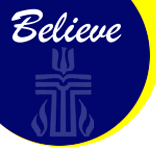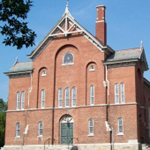 |
Lima Presbyterian Church |
 |
||||
|
The small village church at the main crossroads in Lima |
||||||
| Worship & Music | Faith Development | Congregational Life | Mission Outreach | Please Join Us | ||
| ||||||||||||||||||
|
Sermon 4-17-11
"Festive Parade, Funeral Procession or Protest
March?" At first glance this is a pretty straightforward story – a guy on a donkey rides into town. But the story occurs in all four gospels, so it must be a particularly important story. And being a Bible story there may be several levels of meaning in it, all of them shedding light on the person of Jesus. So what was really going on there with that guy on the donkey? Was it a Festive Parade? Jesus’ ride into Jerusalem took place just before the Passover Festival. Hundreds of thousands of pilgrims were streaming into Jerusalem. “Tell Jerusalem your King is coming!,” verse 5 says. Thousands of Jews had heard of Jesus’ message and witness. They were expecting a Messiah who would save them from their oppressors and the word was that this Jesus was the guy. The strangeness of a man riding on a donkey, which only women and children rode, men preferring to walk, was foretold by a passage from the prophet Zechariah (9:9):
Rejoice greatly, O daughter Zion! A large crowd had gathered in anticipation of their king’s arrival. They spread cloaks and tree branches on the road to keep down the dust. “Hosanna” they shouted. Hosanna’s literal meaning is ‘save us, we pray’ or ‘help us, we pray.’ Matthew’s usage here is probably more along the lines of ‘we praise you’ or ‘praise to you.’ “Hosanna to the Son of David,” they shouted with the expectation that Jesus would be the next in the line of kings to rule Israel. A good case can be made that this was a triumphal parade, in fact, this seems to have been gospel writer Matthew’s point of view. Was it a Funeral Procession? If the central theme of the festival parade is exaltation, the central theme of the funeral procession is humiliation. Concentrate on one and forget the other and the gospel may be weakened or lost. The tension in the Palm Sunday story is that Jesus is obedient to the point of death on a cross while at the same time God has given him the name that is above every other name. There was Jesus riding to his death, he knew it and his disciples knew it because he had told them. The authorities were already planning to arrest him. In five days he would be crucified. The very crowds who were cheering him now in few days would be calling for his crucifixion. Jesus knew that sin was the enemy, and that, because of sin, people would sing songs to him one day and call for his death the next. Jesus knew as his followers called out to him for salvation on Palm Sunday that they would bow to political pressure and call for his death by Friday. Jesus knew that, despised and rejected, he would suffer death upon the cross. He knew from the very beginning - and he gave himself over to that death anyway. There is a certain theological danger here. When we celebrate suffering and death as Jesus’ divinely ordained mission, some churches imply that suffering is the lot God portions out to all of us, including the abused and those who are subject to economic and political injustice. Its God’s plan, they say, accept it. We don’t say that here. Abuse is abuse, injustice is injustice and no one deserves either. God’s plan is peace, love and justice for all. Still, there is pain in the world. For Jesus, Jerusalem was both the city of God and the city of pain. Today Jerusalem is still a city of God and a city of pain. There is an old rabbinic saying:
Ten measures of beauty gave God to the world:
Some things never change. Was it a Protest March? The Jesus who entered Jerusalem was a challenge to the established powers. He was an indirect challenge to the Pharisees, who the Romans had charged with the task of keeping order in the province in exchange for the freedom to worship. If this business of Jesus being the long heralded King of the Jews went too far, the Romans might become upset and institute a brutal crack-down and in the process disenfranchise the Pharisees. Jesus was already known be a direct threat to the Pharisees and their lucrative temple culture. The first thing he did after riding into town, the very next verse in Matthew, was to once again overturn the tables of the crooked moneychangers in the temple. To add insult to injury the children in the temple then shouted out “Hosanna to the Son of David.” Clearly this guy was a troublemaker with the ability to dangerously excite the Jews. Actually, this whole gospel story could be seen as a parody of another event thought to have been taking place on the other side of town. Pontius Pilate was entering Jerusalem on a fine warhorse at the head of a column of Imperial cavalry. They were there to maintain law and order during the raucous Passover Festival. Jesus, by contrast, was on a donkey, an animal traditionally associated with peaceful undertakings. People starred in silence at the Romans. People cheered wildly for Jesus. “Hosanna” they shouted to Jesus, perhaps in its original Aramaic sense of ‘save us,’ save us from the Roman occupiers. Was this event like one of those protest marches in America during the 1960s? Would Jesus be a threat to the established powers today? Would he threaten the rich with his emphasis on serving the poor? Would he threaten war-like governments with his emphasis on peace? Would he threaten the privileged with his emphasis on justice? Gandhi did. Nelson Mandela did. Martin Luther King did. Do we, who claim to be Jesus disciples, do we threaten the established order? Jesus was a charismatic guy. He attracted crowds with his teachings and his miracles. People came from far away to see him in person. Now in every crowd there will be supporters and doubters. And the mood of the crowd can shift dramatically quite quickly. Festive parade, funeral procession or protest march, for some in the crowd it may have been each of those. But for Jesus it was different. Jesus knew who he was dying for.
He knew what was to come and yet he entered Jerusalem.
Jesus knew - and we know. We know his part - and we know our part - and knowing we must still celebrate. The people of Jerusalem stand for us in this story. It is necessary for Jesus to enter us, and it is necessary for us to receive him, so that his sacrifice on the cross can have meaning in our lives. We must cheer for life, knowing that death follows. We must praise Jesus and call him Lord, all the while knowing that we, like so many others, are likely to fail him. We must cheer him. We must remember that Jesus knows who we are and what we have done and will yet do. And we must remember that he will still lay down his life to lift our burden of sin, to save us from ourselves. Thanks be to God. Amen. |
| |||||||||